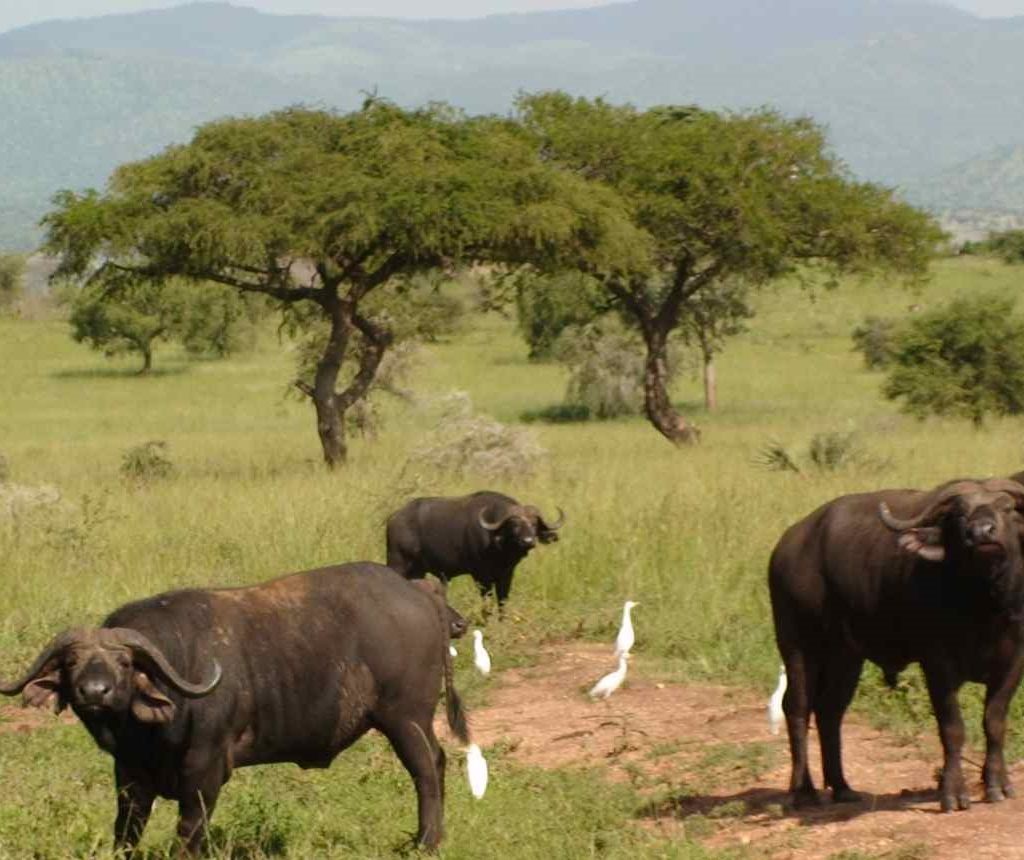Pian Upe Game Reserve the second largest conservation protected area in Uganda after Murchison Falls Conservation which is 2788 square kilometers to the north of mountain elgon. Pian Upe Game Reserve is now under the management of Mountain Elgon Conservation Area. Pian Upe Wildlife Reserve along with Matheniko Game Reserve and Bokora Wildlife Reserve is located between Mt. Elgon National Park and Kidepo Valley National Park and was established as a game reserve in the 1960s.
Pian Upe Game Reserve lies in semi-arid country which usually receives rainfall in April and more substantial showers from June to early September but some years the rain fails completely. Book Now

Wildlife in Pian Upe Game Reserve
The reserve is covered by wooded grassland and is home to two pastoralist tribes from which it gets its name: the Pian, being part of a sub group of the Karamojong, and the Upe, being a Kalenjin speaking people more widely known as the Pakot within Kenya and Uganda. It once hosted high densities of abundant wildlife, which was poached in the 1970s and 1980s during the Idi Amin era. Efforts are being made to restore it to the former glory. In the recent past, the reserve is mostly unexplored and with virgin pristine habitat known to harbor unique wildlife including cheetahs, the greater Kudu, Roan Antelope, eland and a vast array of unique bird species including ostriches.
The southern part of the reserve was gazetted as the Debasien Animal Sanctuary in 1958. A government-led project to convert land just south of the Greek River for agriculture threatened the viability of wildlife conservation in the whole area. In 1964 the area was expanded northward and renamed Pian-Upe Game Reserve.
From Amudat, in the heart of the wildlife reserve, savanna grassland extends in all directions, far beyond the gazetted area towards horizons outlined by distant ranges and Kadama hills. The hills, that appear like a sheet spread across the rocks, overlook expansive grassy plains dotted with big rocky outcrops and flanked by steep-jagged mountains with the summit ridges of Kadama Mountain.
A 2003 proposal to degazette the reserve in order to farm fruit on the land was blocked. There is a hot spring potential for Geothermal tapping at Cheposukunya. Further to that, there are Mercury wells at Mt. Kadam. The reserve features semi arid climate with one rain season annually.
The community at Pian Upe Game Reserve
Pian Upe is a home to two pastoralist tribes for which it is named: thespian being part of a sub group of the Karamoja, and the Upe being a Kalenjiin speaking people more widely known as the Pakot within Kenya. These two tribes have a history of armed conflict mostly related to cattle rustling. At times the Pian and the Upe team up to fight neighboring tribes in Kenya or Uganda or at times they have directed their violence to each other.
Plants
Most of the reserve is covered by undisturbed grassland and wooded grassland. Small areas of riverine woodland, kopjes also exist. Some land is cultivated, and especially the area near the Greek River is threatened by conversion.
Pian Upe Game Reserve Wildlife
Pian Upe wildlife reserve contains one of the most exciting fauna of any Uganda wildlife reserve with 44 species of mammal, several of which are (in Uganda) restricted to Pian Upe and Karamoja Sub-region. The reserve also boasts an extensive bird list of 242 species confirmed and 11 unconfirmed, second only in Uganda to Queen Elizabeth National Park, the only park to find the Ishasha tree climbing lions. The Pian Upe is the only wildlife reserve in Uganda that has the Roan antelope.
Although the area once supported healthy populations of lions, elephants, black rhinos and giraffes, these are now locally extinct. The last giraffe was reportedly poached in 1995. Populations of plains zebra, common eland, are also threatened Grants gazelle.
Animals in Pian Upe Game Reserve include Leopard, cheetah and spotted hyena are quite popular by ranger patrols and a small population of lions is present. Among the ungulate species are bur hell’s zebra, buffalo, eland, Harte beast, greater kudu, topi, orib, dik-dik, and Uganda’s last population of roam antelope. In addition, there are also vervet monkeys, olive baboons, the far localised pata monkeys and the black-backed and side-stripped jackals.
The most commonly sighted mammal in the reserve is the oribi. Others known to inhabit the area (as of 1996) include:
Dominant tree species are red acacia and desert date. Also present are bushwillows, Harrisonia abyssinica and red spike-thorns. Shrubs include butterfly pea and wooly caper bush. Cultivated areas have many live fences of yellow oleander.
Common grasses in the grassland are thatching grass and bristle species. Less common are beard grasses and lemon grasses. Along the rivers Vlei bristle grass and red nut sedge dominate. The lower vegetation layer burns every year.
Getting There
Mbale-Moroto road roughly 90 km from Mbale
What to do
- Forest walks,
- Bird watching,
- Mountain Climbing,
- Study Tours,
- Camping
